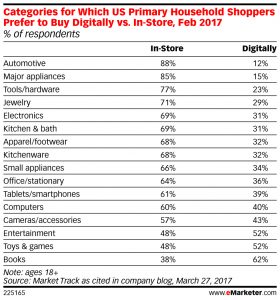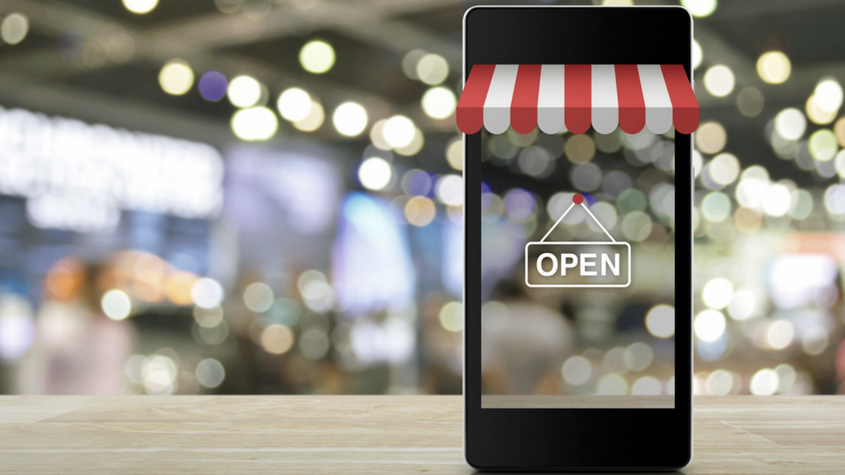Are Mobile Payments & Mobile Commerce Finally Tying the Knot?
May 10, 2017 / By Vanessa Horwell
Over the past few years, we have seen a steady growth of mobile payments across all industries. In a study last November, 93% of consumers surveyed by Deloitte reported using their smartphones for “shopping.” By that measure, shopping is the number two activity (second only to work) for which consumers use their mobile devices.
Today, so much of marketers’ messaging is around being “mobile-first” and if you looked around in any environment, almost every single person has their face buried in a mobile screen… and yet, there’s a major gap between “shopping” and “buying.” Only 40% of those surveyed reported using their phones to actually pay for products – proving that consumers’ propensity for making mobile purchases lags far behind their interest in mobile commerce.
Given the limited usability and minimal appeal of many brands’ mobile payment experiences, it’s hard to blame consumers for abandoning their mobile commerce activities prior to completing the purchase phase. Broadly, retailers have failed to make the mobile checkout experience as seamless and simple as the desktop checkout experience – nor as holistically linked to consumers’ engagement with their brand across other channels such as email and social media.
Mobile Payments and Sales Misalignment
Of course, there are many issues contributing to this problem, but a critical area is the lack of holistic mobile marketing and sales strategies employed by retailers.
Among many brands, the consumer’s app or mobile-site experience was designed to simplify browsing by making the available products or services easily viewable via smartphone. What it wasn’t necessarily designed for was driving loyalty, maximizing return visits, or moving the shopper through the purchase funnel in a simple, intuitive way.
In so many instances, retailers’ checkout portals often feel ‘tacked on’ to their apps or mobile sites, providing a little link to existing campaigns, offers, promotions, or compelling strategies. As a result, the checkout experience can seem divorced from the consumer’s existing relationship with the brand.
Thanks to new developments in the mobile commerce space, however, retailers may soon have more options for incorporating mobile payments activity into the end-to-end buying process. With the mobile payments market heating up and predicted to reach $27.8 billion by 2026, technology and financial-services companies are aggressively addressing the challenge of marrying mobile commerce to mobile payments in a more integrated, cohesive way.
Mobile Commerce Success Starts with Better Mobile Payments Experiences
 SyPi Mobile App
SyPi Mobile App
For example, Synchrony Financial (an issuer of private-label credit cards) has already invested in helping brands link their loyalty and credit card functions with a more seamless checkout experience. Last fall, Synchrony announced the launch of a feature called the Synchrony plug-in (or ‘SyPi’) that allows retail card holders to shop, redeem rewards, and “manage and make payments” to accounts without ever leaving a retailer’s mobile app. Which is really the whole point, isn’t it? Keeping the shopper within the branded retailer environment.
SyPi has created a seamless mobile option for engaging a retailer’s most important audience: its valued repeat customers. Synchrony has also signaled its intent to take SyPi further: The company recently acquired GPShopper, the partner with which it collaborated to develop to SyPi feature. According to Maya Mikhailov, co-founder and chief marketing officer of GPShopper, SyPi is “about creating the touchpoints to get the consumer into these retailer programs."
By joining forces, Synchrony and GPShopper want to offer retailers a customizable, flexible solution for engaging shoppers across more channels and ultimately, drive stronger mobile purchasing activity.
For large retailers, incorporating mobile payments in this way gives them the opportunity to segment and target consumers much more effectively, with highly personalized offers and incentives to join their loyalty programs or scale up on existing promotions.
That said, we’ve been talking about the mobile commerce ‘silver bullet’ since before 2010. Will more technology players follow suit this year to deliver the kinds of integrated solutions for linking loyalty and rewards into the mobile experience that shoppers really do expect today?
With the majority of US shoppers still making many of their purchases in-store, it remains to be seen how brands will take on a more integrated payment and loyalty-focused approach in order to move their mobile shoppers from “browse” to “buy.”
 Source: eMarketer Retail
Source: eMarketer Retail
Sign up for our insights on the convergence of business and PR






